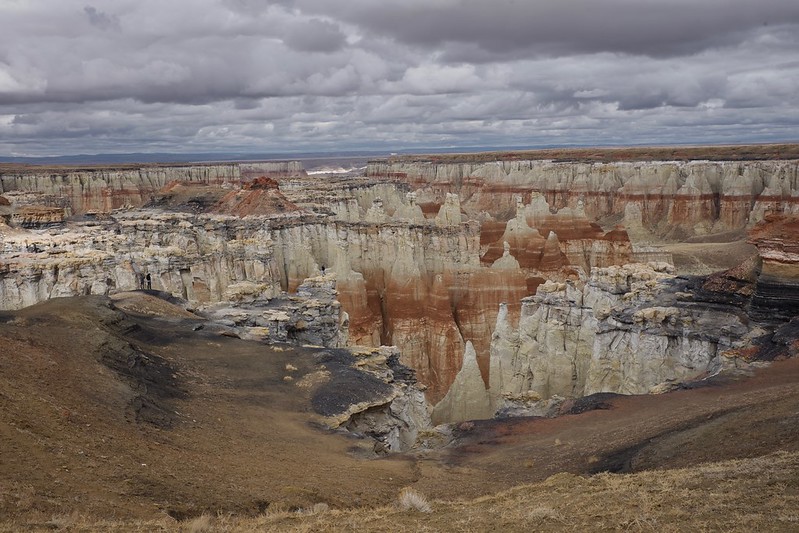Desert Attunement Techniques
Carry water. Wear good shoes. No drones.
Adjust your rhythm to the desert. Emphasize slowness and short bursts of activity.
Move at different speeds. Notice how as your body adapts to the lay of the land.
Stay still. Practice durational abiding to sense other-than-human scales.
Listen. Use your ears and sensing technologies to hear voices often unheard.
Become comfortable with solitude. Learn from shamans and desert hermits.
Celebrate life in the desert. Hold seasonal observances, ceremonies and feasts.
Commune across cultures, species and environments, using whatever means possible.
Acknowledge interdependence. Live in solidarity with other desert inhabitants.
Always remember — the desert is awe inspiring, it is also unforgiving.

Fieldnotes #3
Excerpts from "Dust & Shadow. Fieldnotes #3" by FoAM (Maja Kuzmanovic and Nik Gaffney)
We are attuning to the surfaces of the desert at the pace of modernity, at various speeds and human densities. Attuning to the smear of the landscape sliding past while driving, to the irregularities of the path while trail-running or hiking, to the sounds of the frosty ground and howling wind while walking.
[…]
The spatial and temporal scales in the desert show themselves differently when experienced at speed. Driving through canyon country becomes a movie of geological magnitude. Echoes of an era before the planet became hospitable to humans. A few hours (or moments) later time is adrift, scattered, discarded as it blows erratically along the roadside. We glide through a gentler geological process — layered sedimentation of rock and sand and ash. The dust of minerals layered with the dust of forests and crushed bones. What might the thin layer of the Anthropocene look like, when sedimented atop those older layers, with hues of non-compostable plastics and industrial waste? What layers will come next? What could cover the remnants of the human-dominated sliver of deep geological time?
[…]
We continued our deceleration from 5000 miles in a day, 1000 miles in a week to one mile in 10 days. We arrived and we stayed put. We listened. Experiencing the desert at 0mph, as the warm light of the afternoon intensified into a blood-hued sunset, the fading cool shades of dusk, until the pinprick starlights began blinking into existence, scattered across the desert sky.
[…]
The longer we remained still, the more frequently our neighbours visited. Humming birds, lizards, insects, crows, a pack of coyotes, deer, javelina, even a solitary shapeshifter. The nocturnal scuttlings of unseen beasts. The brutal nonchalance of bats eating crickets. A mundane spectacle of the everyday, indifferent to our arrival. Amidst this teeming habitat on the edge of urbanity, we eavesdropped on incomprehensible conversations of animate matter. Dust and cacti, trees and insects, concrete and sunlight.
[…]
We began to learn the subtle variations in daily routines of plants and animals. We explored the sonic textures of cacti, Palo Verde trees and creosote bushes, listening to the wind on their skin and caressing surfaces with sensing devices. We experimented with directional and ambient recordings, deliberate and incidental sounds. Woodpeckers playing metal chimneys, thrashers mimicking police sirens, howling conversations between dogs and coyotes at dusk. Above and through it all, vast geological scales cast their long shadows, imposing a silent, harsh indifference.

Dust and Shadow Reader Vol. 2. Previous: water knife. Next: pilgrims rules